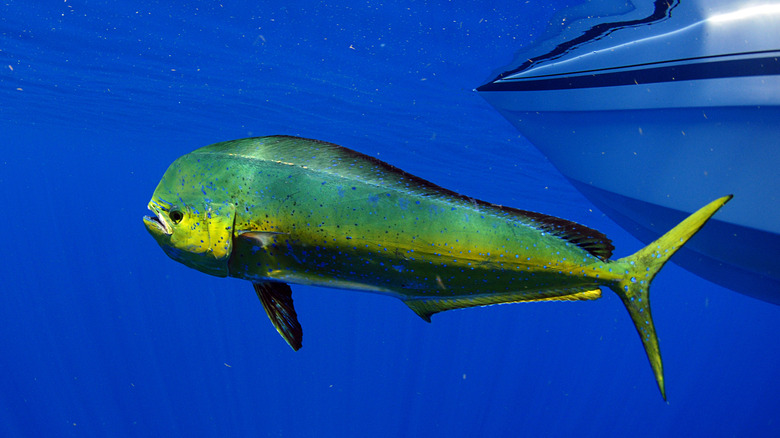What Makes Mahi Mahi A More Sustainable Seafood Option
Mahi mahi is a fairly common fish found on restaurant menus throughout the U.S., but at one time its appearance sparked controversy when it was known by its other name of dolphinfish. People conflated the dolphinfish with the marine mammal and recoiled in horror at the prospect of Flipper being served for dinner.
Never mind that the dolphinfish is actually unrelated to the dolphin, but perception is reality. To avoid any confusion, the Hawaiian name of mahi mahi was eventually adopted to refer to the dolphinfish, which inhabits tropical and subtropical waters worldwide.
Like other species consumed across the globe, mahi mahi are subject to the industrial fishing industry. Overfishing, or catching too many fish at once and impeding a population's natural ability to breed and recover, remains a dire concern for conserving aquatic life in our planet's oceans. The Environmental Defense Fund cites that "nearly a third of the world's assessed fisheries" are threatened by overfishing. Certain fish are more susceptible than others to this harmful human activity, but mahi mahi has certain attributes that make it a more sustainable seafood option.
Breeding success spurs quicker recovery from overfishing
Some studies have shown that mahi mahi populations have the ability to be resilient in the face of heavy harvesting. There are several traits that can assist in speeding along their recovery from overfishing, such as rapid growth rates, reproductive success, and "low age at maturity" for breeding purposes.
When it comes to long-term sustainability of fish species populations, those that can reproduce faster and more often will clearly have an advantage in replacing their depleted numbers, while slower breeders will struggle to recover. For example, an estimated 100 million sharks are killed annually by fisheries, due in part to demand for shark fins to make shark fin soup. Their low rebound rates for recouping their populations make this type of shark overfishing unsustainable.
It is also important to note, as the Florida Museum of Natural History does, that while research has been conducted on mahi mahi's Gulf of Mexico and south Atlantic fishery populations, their entire range has not yet been studied. But at least for the moment, mahi mahi are listed as a species of "least concern" by the International Union for the Conservation of Nature (IUCN) and that bodes well for its immediate future.

